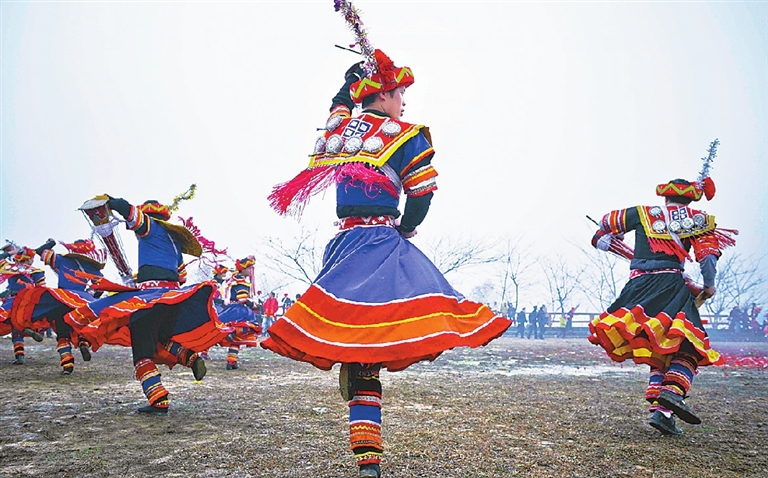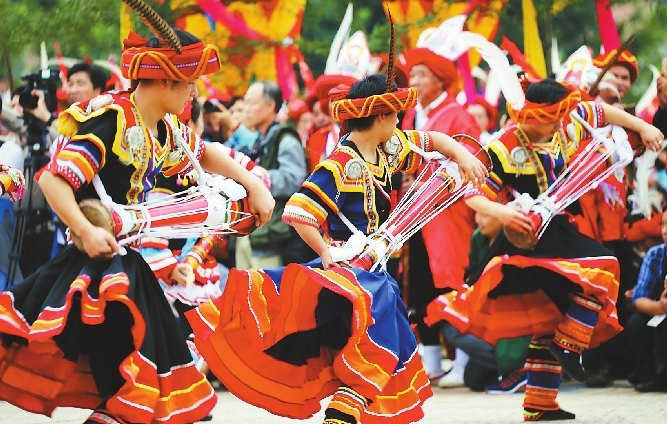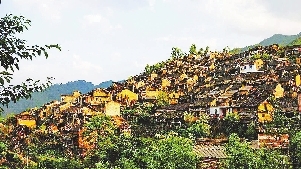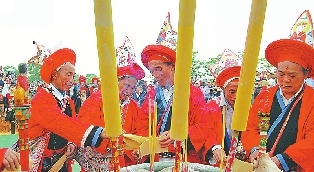



THE Panwang Festival is the grandest festival exclusive to the Yao ethnic group, who mainly reside in South China. Enjoying a time-honored history of over 1,700 years, the festival falls on the 16th day of the 10th lunar month every year. On this day, Yao people of all ages dress up and gather together, singing “The Chorus of the Panwang King,” performing the Long Drum Dance and preparing the most luxurious banquets of the year. This year, inhabitants at the 1,000-year-old Yao village in Liannan, Qingyuan held the first Pangwang King Lantern Festival, or Panwang Festival for short, from Nov. 23 to 25, during which they ceremoniously decorated the village with thousands of lanterns to welcome guests from home and abroad. The Panwang Festival is an ancient festival paying tribute to the Panwang King, an ancestor of the Yao people. Nowadays, the festival has evolved into a comprehensive carnival festooned with sports competitions, trade, and distinctive Yao singing and dancing — including the song “The Chorus of the Panwang King” and the over 2,000-year-old Long Drum Dance with the participation of over 100 people. Worshiping the Panwang King In the ceremony, an altar was set up in front of the Panwang King Temple to offer sacrifices to the Panwang King. Priests presided over the worship proceedings and guided all the participants including the welcome team, the performers and the tourists to pay tribute to him. Yao sutras were chanted and sacrificial offerings — including pig heads, glutinous rice cakes, chicken and rice wine — were made to their gods in a sign of religious devotion. Performance parade Following the worship rituals, the crowd marched onward towards more eye-catching traditional performances and fun-filled activities. Led by the priests, who ring copper bells and chant a sutra at the front of the procession, the parade made its way to the dance plaza. Flags were then placed on the plaza, and the Long Drum Dance team, the ox horn team and the gong team all followed one after another to walk around each flag nine times in a custom that is called “the passing of nine states.” After that, other performances including Yao folksong singing and Long Drum Dance commenced. The Yao Long Drum Dance is a folk dance enjoying a history of over 1,000 years. This intangible custom is honored as a national heritage item. For the festival ceremony this year, villagers also held solo dances, dual dances and group dances. In formal festive dress, with a red ribbon around the waist and white cloth wrapping the legs, dancers play the over-one-meter-long drum while dancing. They sometimes jump into the air and make a sharp turn and sometimes pounce like tigers. Yao wedding ceremony Yao-style romance was also on display during this auspicious occasion. The mysterious wedding ceremony of the Yao people has been listed as a national intangible cultural heritage item as well. Yao boys and girls sang love song to each other to show their unfettered love. Regionally exclusive Yao rice wine was available to guests at weddings. Additionally, there was a lantern riddles-guessing event and a long table banquet for feasting and mingling with locals. The time-honored Yao village coupled with arresting Yao ethnic culture makes this occasion a top cultural retreat in Guangdong. Hiking, enjoying Yao performances and crafts, as well as unraveling how oil, rice wine and tofu are produced are highlights of the exploration. (Chen Xiaochun) | 
